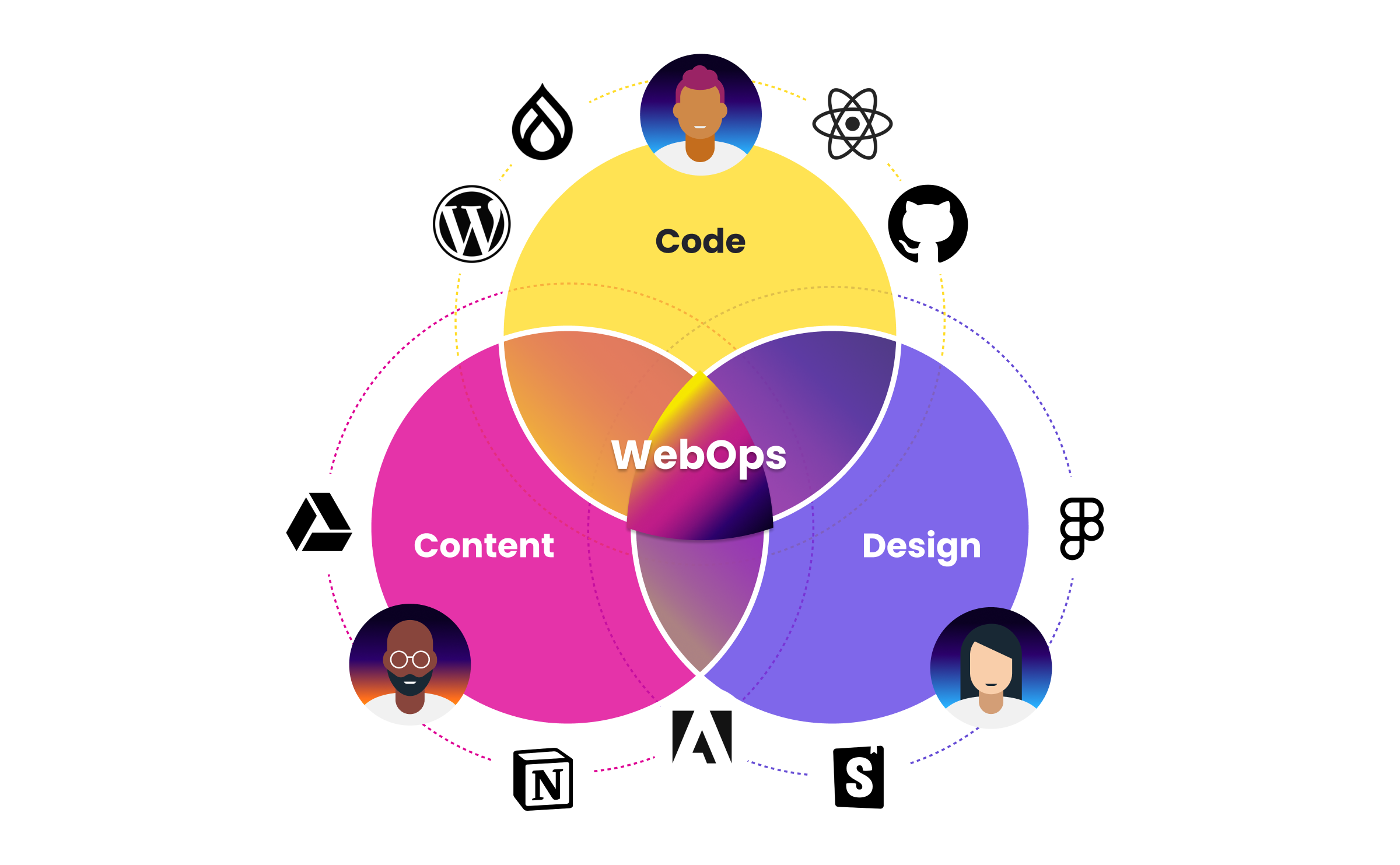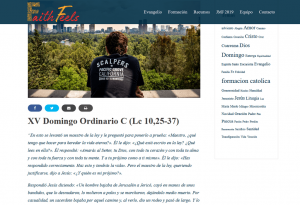
Websites are at the heart of marketing, commerce, and engagement. Whether you’re part of a multinational corporation, a university, or a small business, your websites are the backbone connecting people to your organization.
But more than three decades after the birth of the Web, those of us who create websites are still working in the same broken way: Writing happens in one place. Design happens in another. Developers knit it all together in yet another place. Somehow, it comes together, usually with a lot of back and forth, in yet another system or place. “Can you update this paragraph?” “Here’s the right image.” “That color is off.”
While building and evolving websites demands teamwork, most web teams are left juggling disconnected tools and workflows. All while under pressure to do more with the same resources, and do many things at once.
For example, when I was leading a marketing organization, on any given day my web team would have to:
- Keep up with regular content updates in various drafts of articles, blogs, etc.
- Drive growth with event promotions or landing pages.
- Optimize website technical and SEO performance.
- Work on multifaceted initiatives like product or campaign launches.
- Meet deadlines on big projects like a website (or site portfolio!) redesign.
Teams are pulled in many different directions. When tools don’t work together, collaborating and iterating at the speed the business demands becomes nearly impossible.
Pantheon’s WebOps platform empowers developers to manage multiple initiatives with confidence, with powerful workflows and features like Multidev and Autopilot. But WebOps is more than just technology and code— it’s about empowering people. So, what about the rest of the web team?
Our website tools—Drupal, WordPress, and even Pantheon—haven’t fully bridged the gaps in how web teams work together. While we’ve streamlined the development process (Dev, Test, Live), content publishing, design, and marketing workflows remain disconnected.
To unlock true WebOps, these workflows need to be integrated: content creation, editing, and publishing; design with tools like Figma; and the marketing capabilities that drive segmentation, targeting, performance measurement, and conversion optimization. This is the future of WebOps.
Building this future workflow is a multi-year vision. In this post, I’ll show you how Pantheon is turning that vision into reality for our users and customers.
Streamlined, real-time publishing for the modern web team
Today, as a first step toward our vision, Pantheon launched the public beta of Content Publisher for Google Docs. Content Publisher closes the gap between content creation and publication, connecting Google Docs—where teams write, edit, and collaborate—directly to your website for live editing and review before publishing.
While content management systems like WordPress and Drupal have evolved over the years with increasingly better tools for authoring, the reality is that most content is created somewhere else (e.g. Google Docs or Microsoft Word) and ends up in the CMS as a final step. Previewing and publishing changes, especially beyond a single page? In the open-source CMS world, this isn’t just a challenge—it’s a constant struggle. We’ve been fighting with workarounds and manual processes for years, patching together solutions that don’t quite fit.
Content Publisher bridges a critical gap in web workflows, connecting the people—writers, publishers, and developers—and the tools they rely on, like Google Docs, Drupal, WordPress, and Node.js. It eliminates copy-pasting inefficiency and endless revision requests like “Can you update this again?” By centralizing and streamlining content creation and publishing, Content Publisher directly addresses one of the biggest pain points in today’s content workflows.
And this is just the beginning. Content Publisher also leverages AI-driven enhancements, such as auto-summaries, metadata generation, and soon, automated image suggestions, to keep workflows flowing seamlessly.
In this content integration layer, content is prepared, assembled, organized, enriched, and controlled (think accessibility but also compliance or fact-checking).
The service offers a modern user interface for editors and administrators to do all these things. They can manage their collections of content, define the content structure, and manage all related metadata. Here, we use AI to help deliver speed and productivity: LLMs help suggest classification, descriptions, and summaries and can also identify relevant content or media. Structured content can then be deployed with native WordPress and Drupal integrations, a Next.js SDK, or anything your team can dream up to connect with the GraphQL API.
But Content Publisher is only the first step. We’re tackling this issue from every angle, with plans to solve more workflow challenges across the entire web team.
Next up: Integrating content, design, and code workflow
With Content Publisher, Pantheon connects content creation to the WebOps workflow. Unlike solutions that just pipe word processor input directly into a CMS, Content Publisher is the bridge between content authoring and content publishing, integrating human and AI-driven insights.
And after that? Content operations will be built natively into the Pantheon WebOps workflow. Content will be versioned and packaged alongside changes to code, design, or content structure.
Imagine all the changes needed to launch a campaign, product, or initiative in a single “Change Request” that can be worked on independently, previewed, perfected, and then launched with a single click (or API call).
Beyond the CMS—Reconnect your authoring, editing and publishing workflows
At Pantheon, we’re passionate advocates for open-source software and the Open Web. Many of our team members have dedicated much of their careers to projects like WordPress and Drupal, shaping the web as we know it.
While Web CMS tools have evolved with WYSIWYG, in-context editing, and improved authoring workflows, they still face challenges with orchestrating complex, site-wide changes—especially when those changes span design, code, and content. The databases that power these tools aren’t designed to be forked, branched, or merged.
When multiple changes occur simultaneously, conflicts are inevitable. Imagine our hypothetical marketing website, where writers, designers, marketers, and developers each work with their own tools, all trying to coordinate and integrate their updates with everyone else’s contributions.
While code changes – like a new feature update – can follow a branch-and-merge pattern with tools like Git, other changes from designers in Figma or content creators working in Google Docs must be reconciled manually, with changes happening in parallel.
In the near future, Pantheon’s vision for content operations integrates these disparate workflows into a single stream where changes can happen independently without disturbing other work and then be merged cleanly together back into the site.
This publishing workflow enables confident change across the site where you can see the impact of changes before you make them in production, a core tenet of Pantheon’s WebOps philosophy.
How you can start transforming your team’s content publishing
Today, we’ve released Content Publisher for Google Docs – the first capability integrating content operations into Pantheon’s WebOps workflow. We’d love for you to try it! You can sign up for the beta here.
We’ll release enhancements in the coming months that you can follow in the Pantheon release notes and blog.


